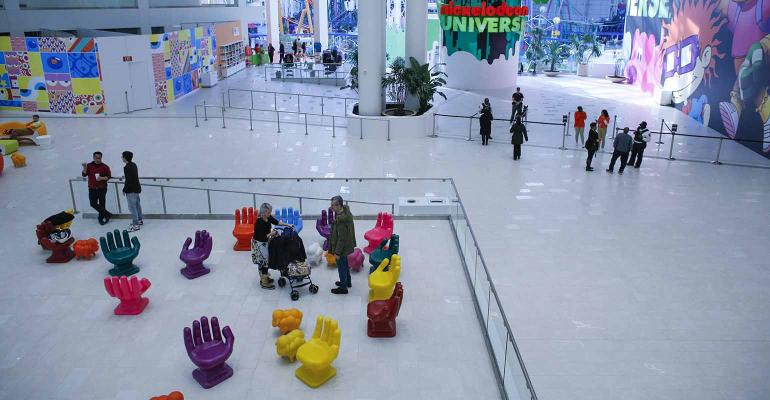In our post-COVID era, a new trend is emerging in retail that is changing how these businesses operate. Retail stores that have traditionally only been seen in shopping malls are now moving out and finding new opportunities to establish standalone storefronts, and vice versa.
There are a few reasons this is happening: COVID brought on a new paradigm of shopping that accelerated the shift to doing everything online rather than going to the store. Many bricks-and-mortar retailers had to close physically and pivot quickly to offer online ordering/pick-up at store options. Foot traffic in these malls decreased as stores closed and consumers went into lockdown. As a result, many of these large spaces were converted into warehouses that Amazon now uses for their e-commerce business. However, with the worst of COVID far behind us, we’re now seeing a reversal in some of these trends.
Malls shifting to experiential and entertainment
Historically, shopping malls were an ideal location for retailers to operate. Consumers would often head to their local mall for a whole day and spend time walking around and seeing all of the different store fronts within the mall. But now that this shift in retail is happening, malls have had to pivot and focus on the entertainment and experiential aspect to help draw in consumers.
With gyms, entertainment (like movies, gaming centers, amusement parks, ski slopes, water parks, etc.) and a wide array of dining options, malls are trying to bring people in through unique experiences, as many brand name stores are on their way out. The American Dream Mall in East Rutherford, N.J., is an example of this shift. In efforts to compete with online shopping, the mall features a 300-foot Ferris wheel, an indoor ski slope, an amusement park and a topline food court, in addition to traditional retailers.
New life and opportunities for retail brands
There are quite a few advantages for retail stores that have chosen to move out of shopping malls. Mainly, rents may be cheaper for brands that choose to make this move. Also, businesses have more flexibility on their hours of operation, as they are no longer under the mercy of a mall’s hours. Parking is also much easier, as standalone stores often have their own dedicated parking lot and spots, versus at a mall where it can be quite a hike for people to reach a specific store from the parking structures.
Many businesses that have decided to make this shift away from the mall have seen great success with this new model. Talbots and J. Jill are a couple examples of businesses that are mainly off-mall and appeal primarily to an elderly demographic. The company Signet has closed 395 stores in the last year and plans to close another 100 this year, while shifting 33 stores to off-mall locations. Bath and Body Works, Torrid and The Buckle are a few more companies that are moving away from malls and establishing new locations at standalone properties. For companies finding success as a result of doing this, these brands are able to increase their conversion rates of sales and do it all with a lower overhead cost.
In addition to bricks-and-mortar locations, open-air centers grew in popularity. During COVID, high-quality open-air malls became more valuable as people were offered convenience and safety. American Eagle, Sephora and other chain retailers are expanding and relocating to these open-air centers for lower occupancy costs, increasing their sales.
However, malls still offer a significant amount of benefits, like convenience, a wide-ranging customer base, favorable foot traffic and large parking lots. In fact, there are some retailers—typically big-box ones—that are finding success moving from standalone stores into malls. Target is one that comes to mind as a business that is taking the huge spaces left by some businesses and thriving within that model. Owners are investing in these big-box retailers as an anchor tenant to increase their leasing power.
From the retailer's perspective, it’s important to remain in good relationships with malls to keep their options open—after all, there are still many benefits that come with being located in a traditional mall. So, while the industry is seeing a shift, malls are clearly not going anywhere—they will simply adapt.
The changing city demographics
During the peak of COVID, Sunbelt cities like Austin and Raleigh, and other places such as Miami, saw an influx of residents looking for warmer weather and larger spaces, while their former hometowns in the North were in serious lockdowns. Part-time residents became full-time, and the traditional seasonality of the shopper evaporated. For example, in Miami, retailers prepared for winter migrators, who increased foot traffic in stores. In the summer months, where migrators returned to their cooler climates, shops became less occupied.
During COVID, people moved full-time to places like Miami, and stores became busier year-round. However, with the COVID vaccine and reopening of stores, restaurants and schools, “flight” cities like New York and Boston, which experienced a dramatic decrease in population, are now seeing residents return, along with new people moving in. This is driving retail growth in areas like Manhattan’s Upper East Side, Hudson Yards and SoHo, which have resumed their place as shopping hubs for locals and visitors alike.
The climate ahead for retailers
Retailers that are reevaluating the health of their retail real estate portfolio would do well to consider the changing demographics. Malls used to primarily serve a purpose for retail and entertainment, and still do, but need to be more cautious about their location as populations have changed drastically in the past few years. Malls need to shift to become more of an entertainment destination, and retailers have to decide how to best move forward and meet this changing market.
Ivan Friedman serves as president and CEO of RCS Real Estate Advisors, a retail real estate consulting firm.




